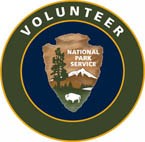|
Just a Few of Your 2007 Accomplishments: The Road Hogs Mend Fences By Building Them The Road Hogs harvested the enormous amount of timber materials required from a fuel reduction project within the park. Ironically, the fuel reduction work was also completed by the Road Hogs. Then they removed the existing fence line with great care so the bucks and rails could be reused to construct the new fence. Finally they built 6,358 feet of buck and rail fence from scratch. The project site was about a half-mile from any roads or trailheads, the Road Hogs carried by hand the bucks and rails up steep, arduous terrain. Believe it or not, the project was completed ahead of schedule. Considering the group works only one day per week and was responsible for other projects simultaneously make this accomplishment even more remarkable. The Butterfly Team-12 Years Counting This project is exceptional because it represents a full 12-year effort to inventory and monitor park species. Once a week for the entire summer, the team hiked up to 15 transects in the park and counted and identified butterflies in a five-meter box while they walked, took weather data, and noted plant associations. They noted early or late arrivals, density of species, and rare species. The transects, or routes, covered the entire park: both sides of the Continental Divide from the montane ecosystem up to the alpine tundra. At the end of the summer and often through the winter they compiled all the notes into a database for analysis and to identify trends. This long-term project has already shown patterns likely associated with bark beetle outbreaks and possible effects to butterflies from climate change or short term regional climate patterns such as El Niño. The Butterfly Team refined a 70-year old butterfly list and added 40 new species. They confirmed 139 butterfly species in the park, 77 are classified as "major" or more commonly found species. To date the team has surveyed 2,565 routes, entered more than 5,000 lines of data, and donated 29,912 hours to the park. By following strict scientific protocols, Rich and the team established an excellent baseline by which future comparison studies may be conducted. Based on the collected information our park managers may make science-based decisions which protect these species in perpetuity. Lois Sumey and the Great Web Migration of 2007 
Uniforms: We have been tasked by the folks higher up the food chain (in Denver and Washington, D.C.) to make sure we display only the new NPS VIP logo. The new patches are round with the arrowhead centered inside a blue circle. We have been given one exception, the gore-tex jackets, due to the expense involved in replacing them. Removing the old patches leaves unsightly scars on the jackets which the new patches do not cover, and the additional holes in the material defeat the purpose of the Gore-Tex, to repel water and wind. If you have a uniform shirt, hat, or windbreaker with the old patch please come to the Volunteer Office for a replacement. |
Last updated: February 24, 2015
